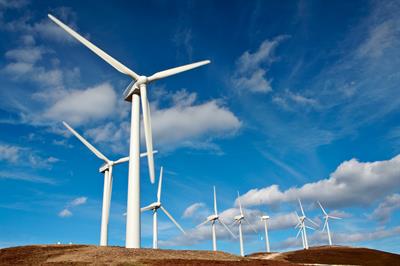As secretariat of the ANSI-accredited A10 standards committee, ASSP prides itself on being at the forefront of best practices for construction and demolition operations.
The recently approved ANSI/ASSP A10.21 standard, Safety Requirements for Safe Construction and Demolition of Wind Generation/Turbine Facilities, is the first U.S. industry consensus standard written specifically for the construction and demolition of wind turbines. A10.21 applies to utility-scale, land-based wind generation/turbine facilities, with the purpose of establishing minimum safety requirements and recommended best practices.
Since the turn of the century, global installed wind capacity has grown from 23,900 megawatts (MW) in 2001 to 539,123 MW in 2017, and now accounts for four percent of the world’s electricity production. This global growth underscores the need for wind turbine construction and demolition to be conducted in a safe manner.
“Wind energy has unique challenges that are simply not adequately addressed in existing standards,” explains Chris Daniels, chair of the A10.21 subcommittee. “A10.21 brings these challenges to light and identifies appropriate mitigation means.”
Among these challenges, according to Daniels, are the remoteness of the work, turbine height, limited access and turbine manufacturer variables. A10.21 addresses these and other challenges by establishing requirements for job site work, as well as equipment.
“A10.21 does more than communicate the requirements of the standard,” says Daniels. “It includes nearly a dozen appendixes that identify additional considerations for specific scopes found in wind.”
In particular, the standard details the steps employers must take during planning and training prior to construction to help prevent injuries or fatalities to workers.
For the planning phase, A10.21 includes general requirements for site hazard identification and assessment, coordination of roles, responsibilities and activities, training and orientation, and development of a safety and health plan in accordance with ANSI/ASSP A10.33 and ANSI/ASSP A10.38.
Moving into construction, the standard states that contractors must develop a site-specific plan that addresses the challenges of working in a remote location and the safety concerns that come with that, including lack of emergency response capability on-site and long lead times for local EMS, lack of communication abilities, and environmental issues such as weather and wildlife.
Contractors must also evaluate the hazards present in the design of the wind turbine, including unguarded moving or rotating parts, unguarded electrical components, exposed wires and elements such as fans or pumps that may start unexpectedly when the turbine generator. Furthermore, A10.21 requires that an employer develop and implement an energization plan to ensure that appropriate controls are in place to protect workers exposed to conditions that could result in electrocution and/or arc flashes.
In terms of equipment and personnel, the standard places requirements on crane and rigging use throughout the construction process, as well as the necessary qualifications for crane operators, riggers and signal people.
Demolition of wind energy projects must be conducted in accordance with ANSI/ASSP A10.6, Safety and Health Program Requirements for Demolition Operations. Subsequent editions of A10.21 will provide further guidance on wind energy project demolition.
The A10.21 appendixes offer additional guidance on several topics including typical site hazards, workforce training, work program best practices, escape and rescue considerations, PPE and industrial hygiene.
Appendix A2 – Site Hazard Assessment Typical Topics, for instance, offers guidance on factors that should be considered during site hazard identification and assessment, including, but not limited to:
- Stakeholder coordination
- Site topography and land use
- Locations of utilities
- Road evaluations
- On-site gravel pits and quarries
- Geotechnical conditions
- Local emergency response resources
- Environmental factors
- Transport to site
- Security
- Impacts due to night work
Understanding Risk Management and Assessment
We have the resources and expert guidance you need to improve how you assess risks to prevent hazards, protect workers and safeguard equipment.
Learn more